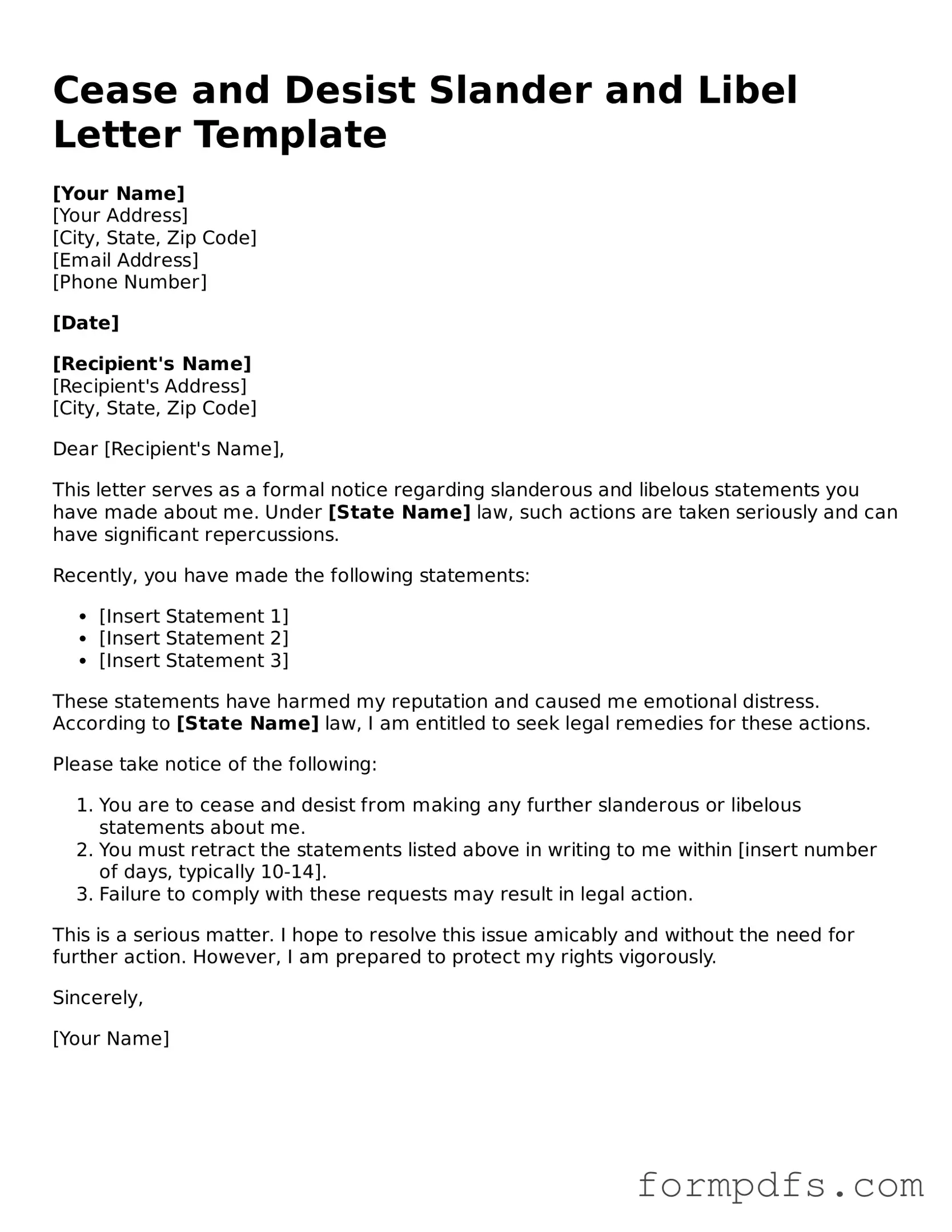Valid Cease and Desist Slander and Libel Letter Template
A Cease and Desist Slander and Libel Letter is a formal document that requests an individual or organization to stop making false statements that harm a person's reputation. This letter serves as a warning before legal action is considered, allowing the recipient an opportunity to rectify the situation. If you believe you have been a victim of slander or libel, consider filling out the form by clicking the button below.
Open Cease and Desist Slander and Libel Letter Editor
